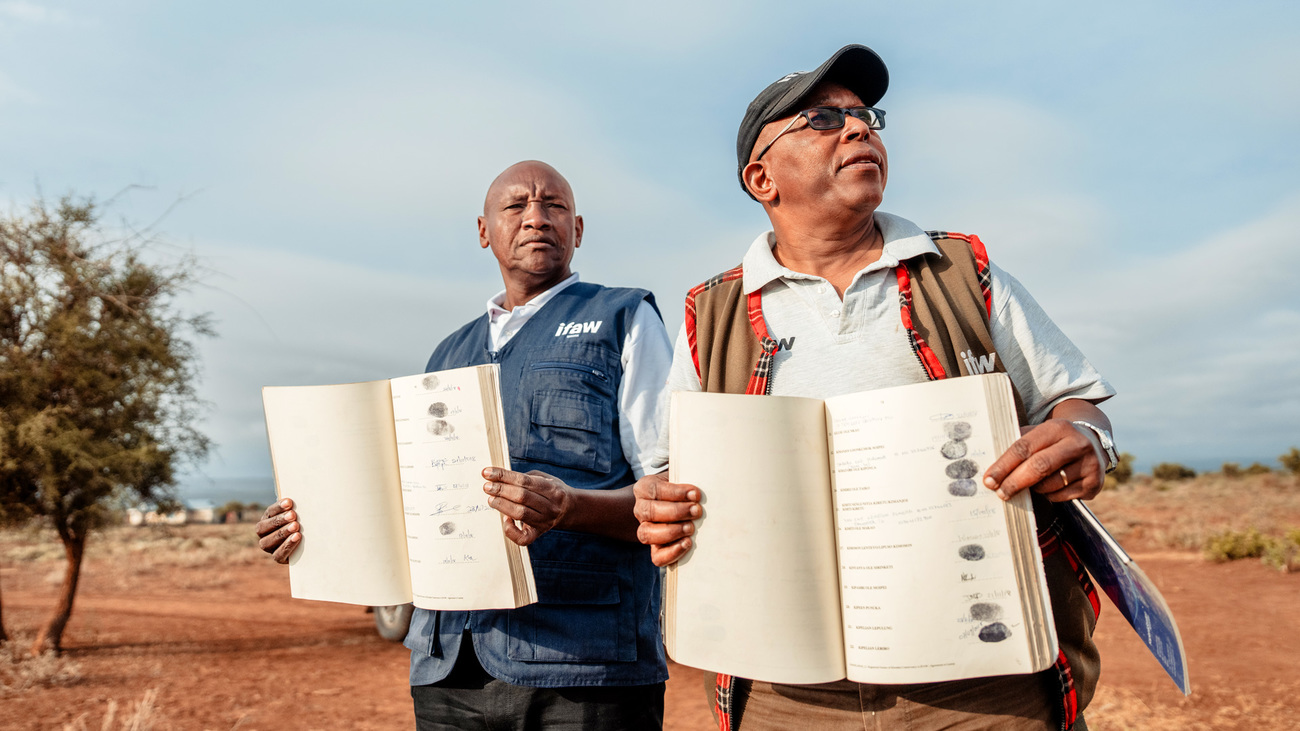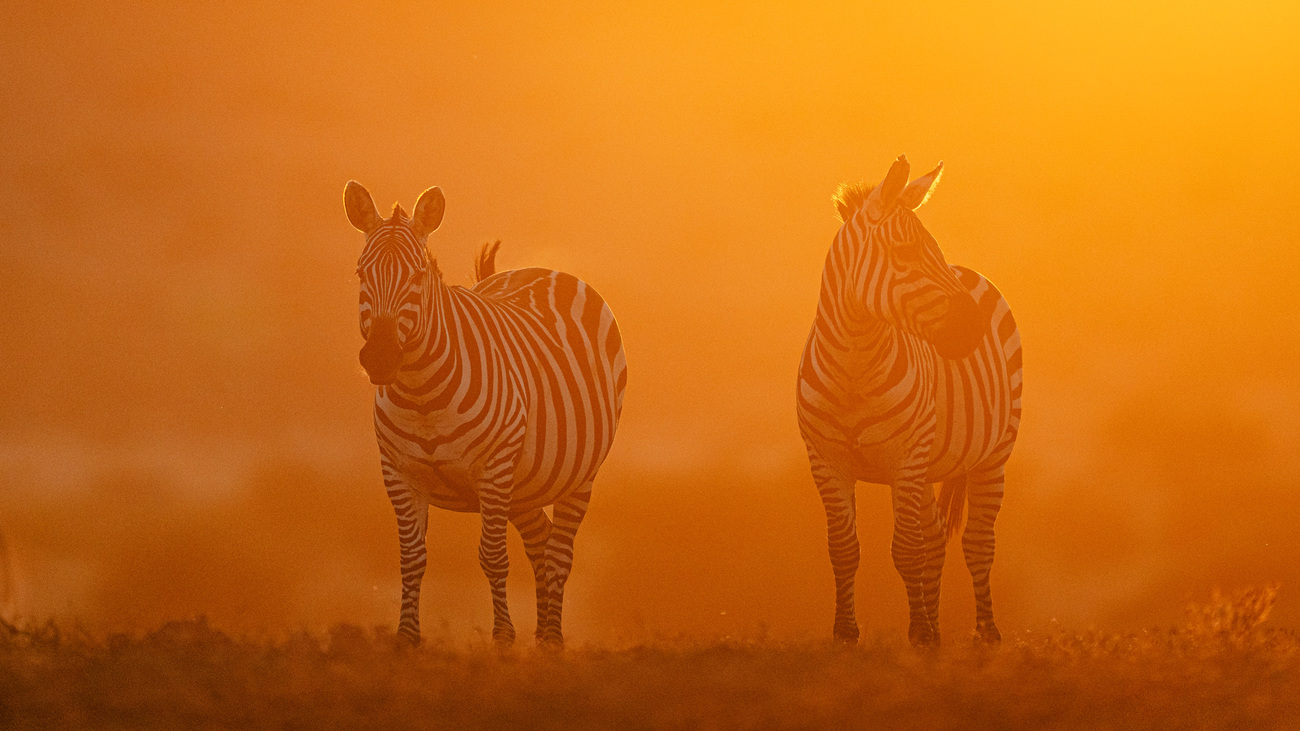Updates
Relief and recovery for animals and people in Myanmar
Read moreWhy conservation needs private-sector investors

On July 1, one of IFAW’s most ambitious projects entered an exciting new phase that I expect will—and should—set a precedent for future large-scale conservation work.
For more than a decade, we have worked with members of the Maasai community who own land in the Kitenden Conservancy outside Kenya’s Amboseli National Park—land which is a crucial foraging and dispersal area for endangered elephants and key to our Room to Roam initiative.
We negotiated lease agreements with thousands of individuals who each own ten-acre lots. Those lease agreements now protect 29,955 acres of land for conservation through the Kitenden Conservancy.
The lease secures the land as an open, safe, and secure space for elephants—and it promises tourism revenue for landowners in the long term. Kitenden Conservancy is tailored to improve people’s livelihoods while investing in infrastructure to make it a fully community-owned and -managed wildlife conservancy.
At the end of June, IFAW’s lease with the landowners of Kitenden came to an end. The conservancy was formally returned to the landowners through the Kitenden Conservancy Trust. They then entered into an agreement with a private investor, Conservation Equity, which will pay the lease fees to the landowners and develop infrastructure to benefit the community and the conservancy’s natural resources.
Having a private investor for the area was always part of IFAW’s plan for the conservancy’s long-term viability. To sustain the level of impact we’ve had to date, we require new approaches and partnerships to drive resources into conservation areas that have traditionally been difficult for investment.
That’s why it’s crucial that we mobilise private capital—at scale and speed—to ensure economic and biological viability and climate resilience for future generations.

When it comes to climate change, we face three severe—and urgent—funding gaps, which cannot be bridged through traditional funding sources alone.
First, there’s the gap between how much we need to invest in conservation efforts and how much governments are currently investing.
The latest UN Environment Programme (UNEP) report on the State of Finance for Nature (2022) states that the world’s climate, biodiversity, and land degradation goals will be out of reach if global leaders fail to swiftly ramp up their investments into nature-based solutions to USD$384 billion a year by 2025. That’s more than double the current investment of USD$154 billion a year.
In the same report, UNEP acknowledges that donor governments provide 83% of finance flows for nature-based solutions, but the fiscal challenges that recipient governments face in addressing other significant issues—such as poverty, conflict, and debt—mean they would be extremely unlikely to increase their funding by the amount necessary. Private capital, which only represents 17% of total investments into nature-based solutions, must rise drastically to begin to harness the power of nature to reduce and remove emissions, restore degraded land and seascapes, and turn the tide on biodiversity loss.
Second, there’s the gap between how much funding nature-based climate solutions receive and the amount of funding or subsidies given for programs that actually degrade nature.
While governments may be providing the most finance for nature-based solutions, they are also spending significantly more on nature-negative activities. UNEP’s State of Finance for Nature says that governments spend an estimated USD$500 billion to 1 trillion a year on environmentally harmful subsidies to fisheries, agriculture, and fossil fuels. That is three to seven times more than public and private investments in nature-based solutions.
Clearly, conservation initiatives are trying to compete on an uneven playing field. If traditional public funders find it prohibitive to provide more funding for nature-based solutions—and, worse, are significantly funding programs that actively work against our solutions—we need to look to other funders to help us level the playing field.
Third, there’s the gap between where the need is greatest and where the money goes.
The most critical natural capital is found in some of the most marginalised, fragile regions of the world. Poverty, conflict, inadequate governance, and land-tenure issues in these areas can slow down progress, or create real and perceived risks for investment.
In July, leading up to this year’s UN climate change conference, the COP28 President called for a special focus on “climate-positive development” across the Global South. It’s vital that developing nations can access affordable and available climate finance.
Private-sector investors are crucial for bridging those gaps—something that is just as crucial for the stability of financial markets as it is for the survival of humankind and our planet’s precious biodiversity. In 2020, the World Bank released a report on nature and the economy. Their research shows that USD$44 trillion of economic value generation is moderately or highly dependent on nature and its services. That’s shy of half of the world’s total GDP in 2022, leaving economies and financial services vulnerable when nature is lost.
The World Economic Forum agrees, warning in 2022 that a survey of nearly a thousand global experts and leaders had named biodiversity loss, climate change, and extreme weather events as the three risks facing our society over the next decade. All three of those risks are closely interlinked and amplify each other.
Last year’s conference of parties (COP15) to implement the UN’s Convention on Biological Diversity even included a full-day event on finance and biodiversity, acknowledging that over the past few years the world had started to understand how our alarming rate of biodiversity loss threatens the economy and financial systems.
That’s why—when they work in partnership with communities and conservationists—private investments will benefit everyone.
Investment in nature is the most effective tool we have to address the climate crisis, where solutions to biodiversity loss and degradation of our climate can be highly complementary.
Currently, most climate investments focus on emissions reduction, carbon removal, or adaptation. Nature-based solutions can address all three at the same time. Reducing the volume of CO2 and draining the metaphorical carbon swamp at the same time is something only an investment in nature can achieve. This ought to make these options highly investible.

While there is a wide spectrum of commercial motives—from philanthropic, branding, or a public-relations focus, through to more mainstream commercial returns—the general view from the private sector is that there are not enough “investible” opportunities.
IFAW’s model at Kitenden is providing those opportunities, and we’re committed to providing more in the coming years.
Kitenden Conservancy Trust, which has the due legal authority to negotiate on behalf of the landowners, took leadership to get this agreement where it is, with us providing advice and facilitating legal guidance to ensure an equitable and well-balanced deal that still prioritises connectivity for elephants.
What does this agreement mean for the landowners and their communities?
Conservation Equity will rent the land for at least 25 years. They will build an airstrip, road infrastructure, animal watering points, and a tourist lodge and villas. Landowners and Kitenden Conservancy Trust, which governs and manages the conservancy, will also receive payments for each tourist who visits.
Plus, at least 80% of the workforce will be recruited from the local community, as will 40 community rangers.
This is the sustainability pathway we plan to see happen as the end game for all the places where we lease land from communities: having private business take over—or, at the very least, subsidise—conservation costs to maintain the land units that are critical for Room to Roam.
We can now redeploy our own resources to secure additional land for wildlife, while finance from private-sector investors ensures the community benefits from protecting the land and its biodiversity.
Through restoring connectivity, creating secure habitats, and bringing together stakeholders, we are creating safe passages for elephants and other wildlife to move freely within their home range of East and southern Africa. This brings greater biodiversity, a natural resilience to climate change, and a future where animals and communities can coexist and thrive.
Our work can’t get done without you. Please give what you can to help animals thrive.
Unfortunately, the browser you use is outdated and does not allow you to display the site correctly. Please install any of the modern browsers, for example:
Google Chrome Firefox Safari